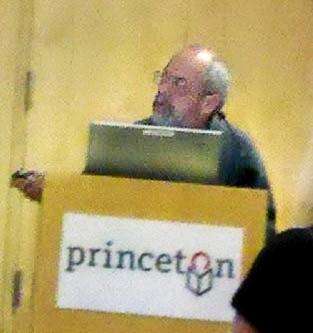Gregory S. Paul (1988) Predatory Dinosaurs of the World, Simon and Schuster, p. 22
Predatory Dinosaurs of the World
Gregory S. Paul: Zitate auf Englisch
Autobiography, part IV http://gspauldino.com/part4.html, gspauldino.com
Autobiography, part I http://gspauldino.com/part1.html, gspauldino.com
Gregory S. Paul (2010) The Princeton Field Guide to Dinosaurs, Princeton University Press, p. 9
The Princeton Field Guide to Dinosaurs
Gregory S. Paul (1988) Predatory Dinosaurs of the World, Simon and Schuster, p. 176
Predatory Dinosaurs of the World
Gregory S. Paul (1988) Predatory Dinosaurs of the World, Simon and Schuster, p. 33
Predatory Dinosaurs of the World
Gregory S. Paul (1988) Predatory Dinosaurs of the World, Simon and Schuster, p. 19
Predatory Dinosaurs of the World
Gregory S. Paul (2010) The Princeton Field Guide to Dinosaurs, Princeton University Press, p. 14
The Princeton Field Guide to Dinosaurs
Gregory S. Paul (1988) Predatory Dinosaurs of the World, Simon and Schuster, p. 367
Predatory Dinosaurs of the World
Gregory S. Paul (1988) Predatory Dinosaurs of the World, Simon and Schuster, p. 53
Predatory Dinosaurs of the World
Gregory S. Paul (1988) Predatory Dinosaurs of the World, Simon and Schuster, p. 19
Predatory Dinosaurs of the World
Gregory S. Paul (2010) The Princeton Field Guide to Dinosaurs, Princeton University Press, p. 52
The Princeton Field Guide to Dinosaurs
“Put a leopard and a [Deinonychus] together and the former would be in trouble.”
Gregory S. Paul (1988) Predatory Dinosaurs of the World, Simon and Schuster, p. 362-363
Predatory Dinosaurs of the World
Gregory S. Paul (1988) Predatory Dinosaurs of the World, Simon and Schuster, p. 344
Predatory Dinosaurs of the World
Gregory S. Paul (1988) Predatory Dinosaurs of the World, Simon and Schuster, p. 362-363
Predatory Dinosaurs of the World
Gregory S. Paul (2010) The Princeton Field Guide to Dinosaurs, Princeton University Press, p. 14
The Princeton Field Guide to Dinosaurs
Gregory S. Paul (1988) Predatory Dinosaurs of the World, Simon and Schuster, p. 346
Predatory Dinosaurs of the World
Gregory S. Paul (1988) Predatory Dinosaurs of the World, Simon and Schuster, p. 338
Predatory Dinosaurs of the World
Gregory S. Paul (1988) Predatory Dinosaurs of the World, Simon and Schuster, p. 69
Predatory Dinosaurs of the World
Autobiography, part III http://gspauldino.com/part3.html, gspauldino.com
Autobiography, part V http://gspauldino.com/part5.html, gspauldino.com
Species of Panthera include the lion Panthera leo, the tiger P. tigris, and the leopard P. pardus, among others. So saying Tyrannosaurus is much like saying "the big cats".
Gregory S. Paul (1988) Predatory Dinosaurs of the World, Simon and Schuster, p. 176
Predatory Dinosaurs of the World
